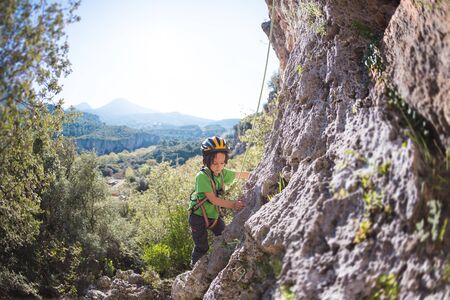Understanding Winter Hazards in US Backcountry
When planning a winter hike in the United States, it’s crucial to recognize the unique hazards that come with exploring the backcountry during colder months. The vast and varied American landscape—from the Rockies to the Appalachians—poses a range of risks that can quickly escalate into emergencies if you’re unprepared. Sudden weather changes are common, with bluebird skies turning into blizzards in a matter of hours. Hypothermia becomes a real threat as temperatures drop and wind chill intensifies. Additionally, avalanches are a significant concern in mountainous regions, especially after fresh snowfall or rapid warming periods.
Below is an overview of some of the most common winter hiking risks US hikers face:
| Hazard | Description | Regions Most Affected |
|---|---|---|
| Sudden Weather Changes | Rapid drops in temperature, snowstorms, and whiteouts can reduce visibility and disorient hikers. | All regions, especially mountainous areas (e.g., Sierra Nevada, Rockies) |
| Avalanches | Snowpack instability can trigger slides capable of burying hikers. | Mountainous terrain (e.g., Colorado Rockies, Cascades) |
| Hypothermia | Body temperature drops dangerously low due to exposure, wet clothing, or exhaustion. | Nationwide; risk increases with altitude and remoteness |
| Frostbite | Tissue damage from freezing temperatures, particularly affecting fingers, toes, nose, and ears. | Northern states and high elevations |
| Icy Trails & Slippery Surfaces | Loss of traction leads to falls and injuries. | Pervasive throughout US trails in winter |
| Navigation Challenges | Snow cover obscures trails and landmarks; electronic devices may fail in cold temps. | Backcountry areas with heavy snowfall |
The unpredictability of winter conditions means that every hiker venturing into the US backcountry must be prepared for these challenges. Building a comprehensive emergency kit tailored to these hazards is not just smart—it could be life-saving.
2. Essential Clothing and Layering Strategies
When building your winter hiking emergency kit, choosing the right clothing and layering system is vital for safety and comfort on US trails. Hypothermia and frostbite are real risks in American wilderness areas from the Rockies to the Adirondacks. Here’s how to select and layer your clothing for maximum warmth, dryness, and mobility.
Understanding the Layering System
The classic three-layer system is recommended by most US outdoor experts:
| Layer | Purpose | US Gear Brands |
|---|---|---|
| Base Layer | Wicks moisture away from skin | Patagonia Capilene, Smartwool, REI Co-op |
| Insulation Layer | Traps body heat | The North Face, Arcteryx, Mountain Hardwear |
| Outer/Shell Layer | Blocks wind & water | Columbia, Outdoor Research, Marmot |
Tips for Proper Clothing Selection
- Avoid cotton—it holds moisture and can accelerate heat loss. Opt for merino wool or synthetic fabrics.
- Choose insulated jackets with down or synthetic fill for maximum warmth-to-weight ratio.
- Pants should be flexible yet protective; consider softshell or hardshell options depending on forecasted conditions.
Accessories Matter Too
- Pile on warm hats (like a Carhartt beanie), waterproof gloves (Black Diamond), and wool socks (Darn Tough Vermont).
- Don’t forget gaiters if you’ll encounter deep snow—Outdoor Research makes popular US-sourced options.
Packing Extras in Your Emergency Kit
- An extra set of base layers in a dry sack can be a lifesaver if you get wet.
- Packed hand warmers (HotHands) and a lightweight balaclava add critical warmth without much weight.
Selecting proven gear from trusted American brands ensures reliability when temperatures drop. With the right layering strategy, you’ll stay warm, dry, and ready for whatever the backcountry throws at you.
![]()
3. Must-Have Emergency Gear
When it comes to winter hiking in the US, having the right emergency gear can be a lifesaver. Snow, ice, and frigid temperatures demand specialized equipment to help you navigate, stay warm, and deal with unexpected situations. Below is a checklist of must-have items that every American winter hiker should pack before heading out on the trail.
Essential Winter Hiking Emergency Kit Checklist
| Item | Purpose | US Hiker Tips |
|---|---|---|
| Navigation Tools (Map & Compass or GPS) | Stay on course if trails are covered or markers are obscured | Don’t rely solely on cell service; bring paper backups for remote areas like those in Colorado or the Adirondacks |
| Headlamp with Extra Batteries | Ensure visibility during early sunsets or emergencies after dark | LED headlamps preferred; always carry spare batteries due to cold draining power quickly |
| Insulated Water Bottle or Thermos | Prevents water from freezing and keeps you hydrated | Nalgene bottles with insulated sleeves work great; fill with warm liquids for extra heat |
| Multi-Tool or Swiss Army Knife | Handles repairs, food prep, and first aid needs | Choose a tool with pliers, knife, and screwdriver for versatility on US trails |
Other Critical Items to Consider
- Emergency blanket or bivy sack: Compact warmth in case you need to spend the night outdoors.
- Whistle: For signaling rescuers if you get lost—three sharp blasts is the universal distress call in North America.
- Duct tape: Quick fixes for broken gear, torn clothing, or even blisters.
Packing Advice for American Winter Hikers
Pack your emergency kit where it’s easily accessible in your backpack—don’t bury it under layers of clothing or food. Always check your gear before each trip, especially after heavy use in snowy conditions. Remember, preparation can make all the difference when exploring America’s diverse and sometimes unpredictable winter trails.
4. Safety and Survival Items
When winter hiking in the US, a well-prepared emergency kit goes beyond just food and water. Prioritizing safety and survival items can make all the difference if you encounter an unexpected situation. Below are essential recommendations to keep you safe on Americas trails during cold-weather adventures.
First Aid Kits: What to Include
A comprehensive first aid kit is a non-negotiable part of your winter hiking gear. Choose a kit tailored for outdoor use, preferably one that is waterproof. Here are key items every US hiker should pack:
| First Aid Item | Purpose/Use |
|---|---|
| Adhesive bandages (various sizes) | Treat minor cuts and blisters |
| Sterile gauze pads & tape | Cover larger wounds or burns |
| Antiseptic wipes/ointment | Clean and disinfect injuries |
| Tweezers & small scissors | Remove splinters/ticks, cut tape or clothing |
| Pain relievers (ibuprofen/acetaminophen) | Manage pain or inflammation |
| Moleskin/blister pads | Prevent and treat blisters from boots |
Fire-Starting Tools: Reliable Heat Sources
Cold weather increases the risk of hypothermia, so being able to start a fire is crucial. Always carry at least two different types of fire-starting tools:
- Waterproof matches (UCO Stormproof Matches are a US favorite)
- A reliable lighter (like a Bic or Zippo)
- Firestarter sticks or cubes (such as WetFire or Tinder-Quik)
Store these in a watertight container or dry bag to ensure functionality even after exposure to snow or rain.
Emergency Shelters: Portable Protection
An emergency shelter can shield you from wind, snow, and freezing temperatures if youre stranded overnight. Recommended options for US hikers include:
- Mylar emergency bivvy sack (lightweight and heat-reflective)
- Pocket-sized emergency blankets (space blankets)
- Ultralight tarp with paracord (for impromptu windbreaks)
US-Standard Signaling Devices: Getting Help Fast
If you need rescue, effective signaling devices increase your chances of being found. Here’s what to pack for American backcountry conditions:
| Signaling Device | Description/Best Use |
|---|---|
| Loud whistle (like Fox 40 Classic) | Easily heard over long distances; three blasts signals distress in the US |
| Signal mirror | Sends bright flashes visible from miles away—ideal for sunny days in open terrain |
| Chemical light sticks (glow sticks) | Useful for nighttime signaling and marking your location for search teams |
Pro Tip:
The Personal Locator Beacon (PLB) or satellite messenger is highly recommended for remote US hikes. Devices like Garmin inReach let you send SOS alerts with your GPS location directly to rescuers—even when cell service is unavailable.
5. Food, Hydration, and Nutrition Considerations
When winter hiking in the US, packing the right food and water is just as critical as having warm clothing or navigation tools. The cold can zap your energy faster than you expect, so your emergency kit should prioritize high-calorie, non-perishable snacks that provide both fuel and comfort. American hikers often rely on packaged trail foods designed for endurance and convenience—think energy bars, jerky, nut butters, and freeze-dried meals. Below is a quick guide to smart snacking and hydration in winter conditions:
| Food Type | Why Its Essential | Popular US Brands/Examples |
|---|---|---|
| Energy Bars | High calories, easy to eat on the move, dont freeze solid easily | Clif Bar, RXBAR, KIND |
| Jerky & Meat Sticks | Long shelf life, protein boost, savory taste breaks up sweet monotony | Jack Link’s, Epic Provisions |
| Nut Butters & Trail Mix | Rich in healthy fats & protein, compact calorie source | Justin’s Nut Butter, Planters Trail Mix |
| Freeze-Dried Meals | Lightweight, just add hot water for a hearty meal at camp or in emergencies | Mountain House, Backpacker’s Pantry |
| Candy & Gummies | Quick sugar burst for energy and morale boost in tough conditions | M&Ms, Haribo Goldbears |
Tips for Keeping Water from Freezing
- Insulate Bottles: Use neoprene sleeves or even a thick sock to keep water bottles from freezing. Store them upside down—the bottom freezes last.
- Avoid Metal: Nalgene-style plastic bottles fare better than metal ones which can freeze shut.
- Add Warm Liquids: Start hikes with warm (not boiling) water; it will take longer to freeze.
- Chemical Hand Warmers: Place a hand warmer next to your bottle inside your pack for extra insurance on frigid days.
- Bite Valve Protection: If using a hydration reservoir (CamelBak), blow air back into the hose after sipping to clear it out and keep it from freezing.
Packing Strategy: How Much Food & Water?
- Aim for 200-300 calories per hour of activity.
- Pace snacks throughout the day rather than big meals.
- Cary at least 2 liters of water per person for day hikes; pack more if overnighting or in remote areas with uncertain water sources.
- Purification tablets or filters are essential if you plan to melt snow or use natural water sources.
The Bottom Line: Prioritize Energy & Safety
The best winter emergency kits are built around energy-dense foods that won’t freeze solid and practical hydration solutions that work even in subzero temperatures. By choosing reliable American trail snacks and keeping these tips in mind, you’ll stay fueled, hydrated, and ready for whatever winter throws your way on US trails.
6. Communication and Location Devices
Staying connected in the American backcountry is critical for safety, especially during winter hikes when weather can quickly become dangerous. While cell phones are a familiar tool, their reliability drops off in remote areas. To ensure you’re prepared, your winter hiking emergency kit should include a range of communication and location devices tailored to U.S. wilderness conditions.
Choosing the Right Device
| Device Type | Best Use Scenario | Pros | Cons |
|---|---|---|---|
| Cell Phone | Near populated trails or with known coverage | Easy to use, familiar, access to apps/GPS | Poor signal in remote areas, battery drains fast in cold |
| Personal Locator Beacon (PLB) | Remote wilderness, life-threatening emergencies | No subscription required, global coverage, reliable distress signal to rescue services | No two-way messaging, single-use per trip, bulkier than some alternatives |
| Satellite Messenger (e.g., Garmin inReach, SPOT) | Multi-day trips in remote regions | Two-way messaging, tracking features, SOS function, works worldwide | Subscription fees required, learning curve for setup |
Advice for Effective Use
- Cell Phones: Always keep your phone fully charged and store it close to your body to protect battery life from freezing temps. Download offline maps and pre-save emergency contacts before heading out.
- PLBs: Register your device with NOAA and familiarize yourself with activation procedures. Only use PLBs for true emergencies as they immediately trigger rescue operations.
- Satellite Messengers: Set up preset messages for quick check-ins with loved ones and share your trip plan with them via tracking links. Regularly practice sending and receiving messages to ensure you’re comfortable using the device under stress.
U.S.-Specific Emergency Services Tips
The U.S. has an extensive network of search and rescue teams coordinated by local authorities and the National Park Service. When using any emergency device, provide clear details on your location (including GPS coordinates if possible), the nature of your emergency, and any relevant medical information. Remember that response times may vary based on weather and terrain—having the right equipment can make all the difference.
7. Pro Tips from US Hiking Experts
When it comes to building a winter hiking emergency kit, seasoned American hikers and local guides offer crucial advice to maximize safety on the trails. Drawing from the expertise of organizations like the American Hiking Society and the Appalachian Mountain Club, here are some best practices and region-specific tips:
Best Practices for Safe Winter Hiking
- Layer Smartly: Use moisture-wicking base layers, insulating mid-layers, and waterproof outer shells to manage body temperature and stay dry.
- Check Local Weather & Avalanche Reports: Before heading out, always consult regional weather services and avalanche forecasts, especially in mountainous areas like the Rockies or Sierra Nevada.
- Leave a Trip Plan: Share your route and expected return time with someone back home. Many US hikers use apps like Gaia GPS or AllTrails for real-time tracking and emergency location sharing.
Advice from American Guides & Organizations
| Tip | Source |
|---|---|
| Carry an emergency bivvy bag in addition to a space blanket for extra insulation. | Appalachian Mountain Club |
| Bring microspikes or crampons for icy conditions common on US winter trails. | Pacific Crest Trail Association |
| Packing high-calorie snacks like trail mix, jerky, or energy bars that won’t freeze easily. | American Hiking Society |
Local Advice for Popular US Regions
Northeast (Adirondacks, White Mountains)
- Packed snow can hide dangerous ice—always use traction devices.
- Carries extra batteries as cold weather drains power quickly.
Rocky Mountains & Pacific Northwest
- Navigation can be challenging in whiteout conditions—bring a map, compass, and know how to use them even if you have GPS.
Sierra Nevada & Southwest
- Weather changes rapidly; pack versatile gear suitable for sudden temperature drops and snowstorms.
The key takeaway from American hiking experts: preparation is everything. Regularly review your kit before each hike, adjust it based on local recommendations, and never underestimate the power of proper planning for winter adventures in the diverse landscapes across the United States.


